Women’s Equal Pay Day—March 24 this year—represents how far into the year women must work to earn what men earned the previous year. It is marked with media attention, a flurry of social media activity and a time to discuss how to right-course necessary change to break this cycle of inequity. Yet for many women of color, the pay gap between themselves and white men is even more significant with their equal pay days occurring much later in the calendar year.
Recently the W.K. Kellogg Foundation sat down with Delia Coleman, deputy director at Equal Rights Advocates (ERA), and Shannon Williams, director of Equal Pay Today at ERA to discuss the significance of women’s pay days throughout the year, the state of women of color in the workforce and the role narrative plays in building lasting, transformative change.
WKKF: Tell me a little more about Equal Rights Advocates.
2021 Equal Pay Days
- March 9 Asian American Women’s Equal Pay Day
- March 24 Women’s Equal Pay Day
- Aug. 3 Black Women’s Equal Pay Day
- Sept. 8 Native American Women’s Equal Pay Day
- Oct. 21 Latina Women’s Equal Pay Day
Williams: Equal Rights Advocates is a nonprofit, women’s focused organization working to close the gaps that women face, e.g., closing the gender wage gap, and building reform around sexual harassment in the workplace and in education spaces. A lot of our work is focused on creating a better life and livelihood for women.
WKKF: Most people are aware of Women’s Equal Pay Day that happens in March. But there are many other days: Latina Equal Pay Day, Black Women’s Equal Pay Day and days to recognize American/Pacific Islander women and Native American women. Why is it important to disaggregate by race and acknowledge these days?
Coleman: These days are important because of the stories they tell. Black and Latina women have been on the front lines of COVID. Women who left the labor force last year were heavily from those communities. [Nearly 3 million have left the workforce in the last year alone.]
People are now paying attention to the intersection of gender and race, and you can't see it more clearly than in what is happening with pay and the labor force.
Delia Coleman, deputy director at Equal Rights Advocates (ERA)
New data continues to come out: Who is re-entering and who is not? Black women are re-entering the workforce at much slower rates than anyone else. As we reopen, Black women are being compensated at much lower rates than everyone else. We cannot ignore race when we look at the economy and when we look at gender, and how these things work together.
Williams: Racial discrimination exists and gender discrimination exists. But when you’re somebody who sits at the intersection of both of those pieces of discrimination, those impacts and those effects compound. You cannot talk about one without the other. It’s critically important that we disaggregate data by race so that people can actually see: What does this translate to in terms of numbers and months? What does it look like in comparison to other demographics that might be experiencing this too?
When we put it out there in calendar form, and people can see that Black women’s Equal Pay Day is August 3, more than half of the year is over. That date signifies how long it takes to catch up to what a white man made last year alone. And then, when you can translate that into what it looks like for communities: What does her community look like? The stores are closing, money is not being put into the economy, families are struggling.
You can do the same thing for the other demographics that fall later into the year. Native Women’s Equal Pay Day is observed on Sept. 8. Latina Women’s pay day isn’t observed until Oct. 21. And look at how the pandemic is impacting these communities. They are disproportionately affected by what is going on and that is a huge result of the fact women of color are not being paid what they should be paid.
Equal pay is not just a gender issue. This is not just a racial issue. It’s both.
Shannon Williams, director of Equal Pay Today at Equal Rights Advocates (ERA)
And when you can see that, see the numbers, then you can start to fix it.
WKKF: What can we do? How do we fix this? How do we ensure women’s work and economic contributions are valued?
Williams: The policies that do harm to women and women of color are not broken. They are doing exactly what they were meant to do. Everything is working exactly the way it’s supposed to be working: They are intended to keep Black women, Native women and other women of color at the bottom.
ERA is focused on advocating for—and equipping communities to advocate for—policies that keep women of color at the epicenter and at the forefront of reform conversations. And we’re doing that in a few ways. First, through storytelling.
WKKF: WKKF published Supporting moms at work story in March of this year, sharing details related to the WKKF-funded effort to collect stories from Black and Latinx families in the U.S. to address the gaps you identified by elevating communities’ unique stories, strengths and needs. Why is storytelling important?
Williams: Storytelling is really important in mobilizing communities because when people can see themselves in the issue, they are more likely to engage in that issue and advocate for themselves. And then it drives them to act.
We are big on storytelling and incorporating those pieces into a lot of our work. We do a lot of storytelling around Equal Pay Day because it sets a foundation for the mobilization work. If we can tell people a story where they can identify themselves and see themselves, then we can convert that into actual boots on the ground and convert that into an actual movement.
Coleman: Storytelling is what triggers people to take action, especially when we are talking about complex, systemic changes. The best storytellers are the people experiencing the issues we are working on. So when we are talking about closing the wage gap and ending occupational segregation, the people themselves—the working women—are the best advocates and the best messengers to talk about the impacts of those challenges.
It’s also not just talking about the challenges. When those most affected talk about the solutions and why those opportunities matter for them, they talk about these issues in terms of what they want for their kids, what they want for their families and what they want for their communities. It is important to frame issues that are complicated and laden with complex data in a way that audiences and communities understand. We have found that when we focus on change and how it impacts working women in communities—particularly Black and Brown communities—it mobilizes people to pick up the phone and talk to their legislator, talk to their employer or push for change.
WKKF: What else can we do?
COLEMAN: The more diverse our partners are, the more our message can spread. Over the past 18 months we’ve seen more diversification in our reach because we are partnering with community organizations representing the communities for whom we work. That creates an echo chamber. The awareness then starts to build traction and awareness.
Equal Pay Day Audience Reach
- 900+ million people reached in Equal Pay Day week of action
- 46 million people in our network reached for Latina Equal Pay Day and Black Women’s Equal Pay Day combined*
*with increased awareness on targeted equal pay day for: mothers, LGBTQ women, Asian American/Pacific Islander women and Native American women
Women on the ground are organizing themselves and their co-workers, and trying hard to push the needle to radically transform our workplaces so that the experiences of women of color guide what needs to happen.
Delia Coleman, deputy director at Equal Rights Advocates (ERA)
Because if we focus on the people who are most harmed, then the boats that rise are that much stronger. That’s solidarity.
The organizations on the ground, the policy organizations and the supporters of these organizations also need to see the opportunity here. What is going to change the system is a commitment to advocacy and a commitment to policy solutions that are driven by listening to Black and Brown communities across the country.
We stand in solidarity with women workers of color, no matter what kind of worker. If women of color don’t succeed, none of us will.


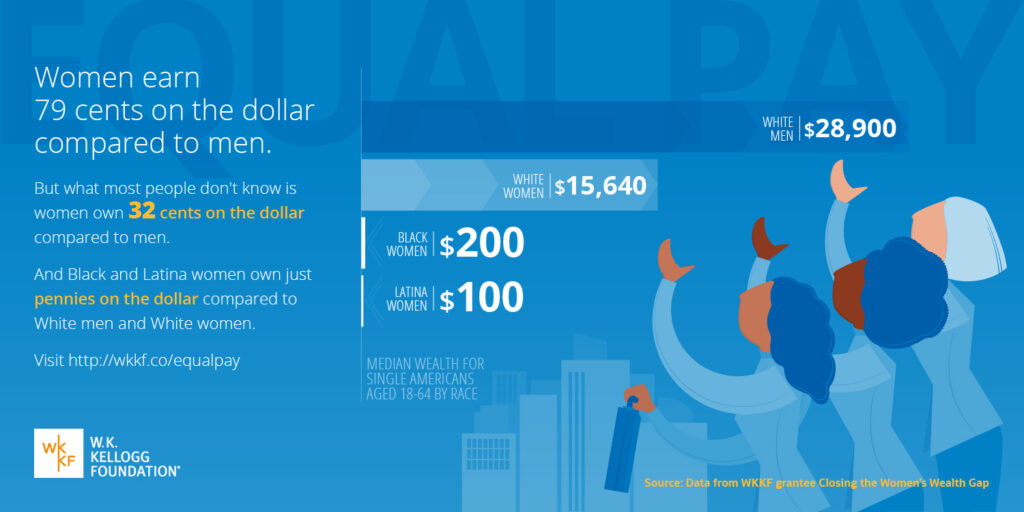
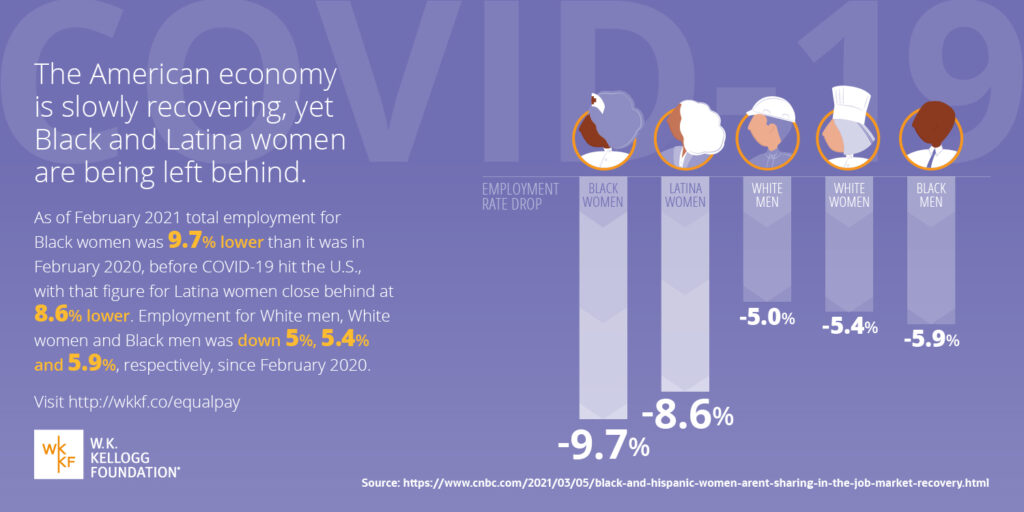
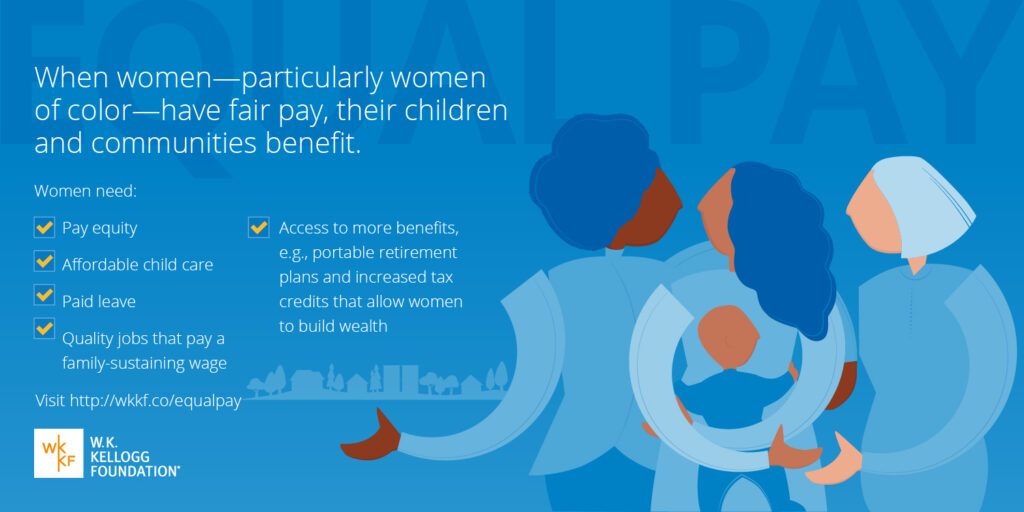
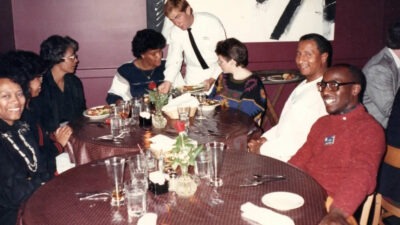
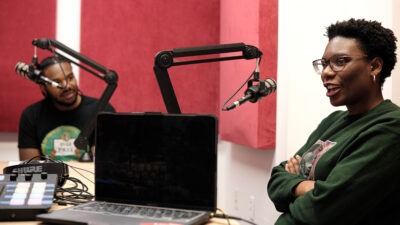




Comments